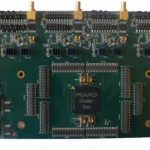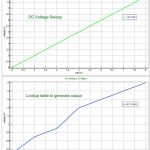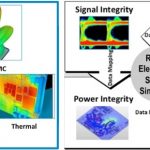You are currently viewing SemiWiki as a guest which gives you limited access to the site. To view blog comments and experience other SemiWiki features you must be a registered member. Registration is fast, simple, and absolutely free so please,
join our community today!
Open Source Verilogby Paul McLellan on 08-03-2014 at 8:01 amCategories: EDA
Over the years there have been various open source EDA projects but none that has realized a full industrial strength design tool that has broad adoption and is strong enough to compete with similar products from the EDA industry.
Open source is clearly a great way to develop software. Lots of people can see all the source code and … Read More
Go ahead – type “open source” into the SemiWiki search box. Lots of recent articles on the IoT, not so many on EDA tools. Change takes a while. It has only been about five years since the Big Three plus Aldec sat down at the same table to work on UVM. Since then, Aldec has also gotten behind OS-VVM, and is now linked to a relatively new open… Read More
In my career in semiconductor industry, I can recall, in the beginning there was emphasis on design completion with automation as fast as possible. The primary considerations were area and speed of completion of a semiconductor design. Today, with unprecedented increase in multiple functions on the same chip and density of the… Read More
One great benefit of designing at the ESL level is the promise of power savings on the order of 40% to 70% compared to using an RTL approach. Since a typical SoC can contain a hierarchy of memory, this kind of power savings could be a critical factor in meeting PPA goals. To find out how an SoC designer could use such an ESL approach to power… Read More
Today, Cadence announced Protium, a new FPGA prototyping platform for software development. During development of an SoC, the most appropriate methodology changes. In the early days, developing RTL, the primary tool is simulation. Then, as the blocks get bigger or as the whole chip starts to come together, typically simulation… Read More
EDA industry pundit Gary Smithhas been talking about the electronics industry adopting an ESL tool flow for decades, so it was my pleasure to speak with Bill Neifertof Carbon Design Systemsat DAC this month because his company has been offering both tools and models that enable a virtual prototyping design flow.… Read More
Vector blasting hardware is as old as digital test methodology itself. In the days of relatively simple combinational and finite state machine logic, a set of vectors aimed broadside at inputs could shake loose most faults with observable outputs. With FPGAs, creating an effective set of artificial test vectors has become a lot… Read More
Teach Yourself Silvacoby admin on 05-12-2014 at 10:53 amCategories: EDA
In the dim and distant past, if you wanted to learn how to use a particular EDA tool then you would go on a training course. This would often be multiple days and often a significant dollar investment too. For most EDA companies, that option still exists and the big 3 have quite extensive training catalogs.
But nowadays it is often easier… Read More
LSI Corporationstarted in 1980s and I had several encounters with it during my jobs in 1990s; not to forget the LSI chips I used to see in desktops and other electronic systems, and I’m happy to see LSI continuing today with more vigour having leadership position in storage and networking space. It provides highly reliable, high … Read More
Usually these brief history pieces are totally written by the SemiWiki blogger whose name is at the top. Often me since that was how I prototyped book chapters (buy). Well, OK, I did actually write this but it is completely cribbed from a presentation earlier this week by Wally Rhines who gave a sort of keynote at the announcement of… Read More







